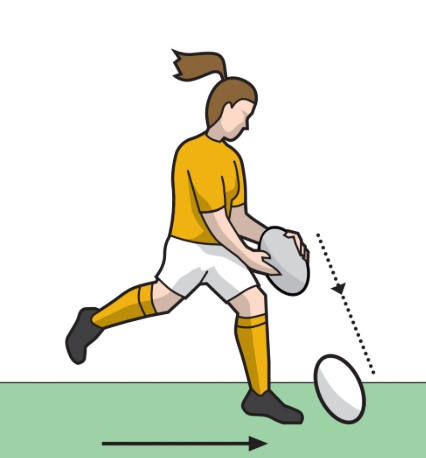Sports Rules: Sports are meant to be a source of entertainment, skill, and excitement. However, every sport, no matter how popular, has its own set of rules that can sometimes leave fans and players scratching their heads in confusion. These rules may appear trivial, overly complicated, or downright strange to the casual observer. While they serve specific purposes within their respective sports, they often seem perplexing to those unfamiliar with the reasoning behind them.
Sports Rules: In this article, we will explore some of the most annoying and confusing sports rules, shedding light on the logic (or lack thereof) behind them. Whether it’s in cricket, football, or tennis, these rules often have the power to disrupt games, confuse players, and frustrate fans. Let’s dive into these head-scratching regulations and see what makes them so difficult to understand.
1. Cricket: The Leg Before Wicket (LBW)

Sports Rules: Cricket is a sport with many complex rules, and perhaps one of the most perplexing is the Leg Before Wicket (LBW) rule. This rule comes into play when a batsman is hit on the leg or pads by the ball in line with the stumps. While this rule has a clear purpose—to prevent batsmen from unfairly defending their wicket by using their body—it’s incredibly subjective and confusing.
Why Is It Confusing?
- Subjectivity: Umpires have to determine whether the ball would have hit the stumps if it hadn’t struck the batsman’s body, which is not always straightforward.
- Line of the Ball: The ball must not be outside the line of the batsman’s legs unless they are offering a shot. Determining whether the ball was in line is a highly subjective call.
- Impact and Bounce: The angle and bounce of the ball also have to be taken into account, making the LBW rule complex to apply correctly.
LBW In Numbers
| Aspect | Detail |
|---|---|
| Offered Shot | Whether the batsman is offering a shot or not. |
| Line of Ball | Ball must be in line with stumps to be judged. |
| Height of Ball | Umpires must assess the trajectory to determine if it would hit the stumps. |
| Impact Location | The ball must hit the batsman in line with the stumps. |
2. American Football: The Fair Catch Kick Rule

Sports Rules: American football is full of quirky and sometimes baffling rules, but one of the strangest is the Fair Catch Kick rule. This rule allows a team to attempt a free kick from the spot where a fair catch is made on a kickoff or punt. It’s like a free field goal attempt, but many fans and players have no idea why it exists.
Why Is It Confusing?
- Rare Occurrence: This rule is extremely rare and almost never used in modern football. Most teams prefer to run or pass the ball rather than take the free kick.
- Lack of Strategy: Given how little it’s used in actual games, the strategy behind a fair catch kick is unclear to most fans. Teams usually don’t attempt it unless they’re out of time in the game and desperate for a miracle.
Fair Catch Kick In Numbers
| Aspect | Detail |
|---|---|
| Kick Type | Field goal-like kick, no rushers allowed. |
| Distance | Attempt from the spot of the fair catch. |
| Rare Use | Used very infrequently in games. |
3. Tennis: The Let Rule On Serves

Sports Rules: Tennis is a sport loved for its intensity and skill, but it has a rule that can often be baffling for both players and fans: the Let Rule. This rule comes into play when a server hits the net while serving, but the ball lands in the correct service box. In such cases, the point is played again. While this is meant to avoid penalizing the server for a minor mistake, it leads to confusion.
Why Is It Confusing?
- No Clear Advantage: A serve that hits the net and lands in the right box doesn’t seem like a mistake, so some feel that calling it a let is unfair.
- Stopping Play: It interrupts the natural flow of the game and leads to unnecessary pauses. Fans sometimes have difficulty understanding why a perfectly good serve needs to be repeated.
- Lack of Consistency: Different tournaments may have slightly different interpretations of the rule, further adding to the confusion.
Let Rule In Numbers
| Aspect | Detail |
|---|---|
| Situation | Serve touches net and lands in correct service box. |
| Result | Point is replayed. |
| Impact | Breaks the momentum of the game. |
4. Football (Soccer): The Offside Rule

Sports Rules: One of the most universally discussed and confusing rules in sports is offside in soccer. The offside rule states that a player cannot be closer to the opponent’s goal line than both the ball and the second-to-last defender when receiving a pass, unless they are in their own half. While this rule is crucial for preventing “goal-hanging” or players waiting for a pass near the goal, it is difficult to understand and apply perfectly every time.
Sports Rules: Why Is It Confusing?
- Subjectivity: Determining if a player is offside often depends on the exact position of the ball and players, which can be tough to judge in real-time.
- Close Calls: The margin for error is razor-thin, and what appears to be a perfectly timed run can easily be ruled offside by a millisecond.
- VAR Technology: The advent of VAR (Video Assistant Referee) has tried to make offside calls more accurate, but it still results in controversial and confusing decisions.
Offside In Numbers
| Aspect | Detail |
|---|---|
| Key Condition | Player must be behind the second-to-last defender when the ball is passed. |
| Subjectivity | Difficult to judge in real-time. |
| Technology | VAR is used to review close calls, but doesn’t always make things clearer. |
5. Baseball: The Infield Fly Rule

Sports Rules: Baseball has its own set of quirky and puzzling rules, and one of the most confusing is the Infield Fly Rule. This rule comes into effect when a batter hits a pop-up in the infield with runners on first and second (or the bases loaded) and the umpire judges that the ball can be caught with “ordinary effort.” In such cases, the batter is automatically out, regardless of whether the ball is caught or not.
Sports Rules: Why Is It Confusing?
- Vagueness: The definition of “ordinary effort” is subjective and can vary depending on the umpire’s judgment.
- Unpredictable: Fans and players are often left wondering why a ball that seems easily catchable results in an automatic out, leading to complaints about fairness.
- Rarity: The rule is rarely enforced, so when it does happen, it can be difficult for fans to understand what just occurred.
Infield Fly Rule In Numbers
| Aspect | Detail |
|---|---|
| Condition | Pop-up hit in the infield with runners on base. |
| Result | Batter is automatically out. |
| Subjectivity | “Ordinary effort” is open to interpretation. |
6. Rugby: The Knock-On Rule

Sports Rules: Rugby is another sport with a passionate following, but it comes with a head-scratcher of a rule—the Knock-On. In rugby, if a player accidentally drops the ball and it moves forward, it is considered a “knock-on,” resulting in a scrum awarded to the opposing team. The confusion arises from determining whether the ball was intentionally knocked on or just a result of an accidental mishap.
Why Is It Confusing?
- Forward or Backward?: Sometimes, it’s difficult to determine whether a ball was knocked forward or if it slipped backward off the player’s hands.
- Accidental vs. Intentional: The rule doesn’t account for situations where the ball is knocked on in a non-intentional manner, leaving players and fans confused.
Knock-On In Numbers
| Aspect | Detail |
|---|---|
| Condition | Ball is dropped forward unintentionally. |
| Result | Scrum awarded to the opposition. |
| Subjectivity | Whether the knock-on was intentional or accidental can be unclear. |
Sports Rules That Leave Us Scratching Our Heads

Sports Rules: Sports rules are crafted to maintain fairness and order, but some rules are so complex, subjective, or obscure that they make players, officials, and fans alike scratch their heads. From the subjective nature of cricket’s LBW to the rare Fair Catch Kick in American football, these rules often add an extra layer of complexity and confusion. While some may argue that these rules serve a valid purpose in their respective sports, they also contribute to the list of “annoying” regulations that challenge our understanding of how sports should be played and enjoyed.
